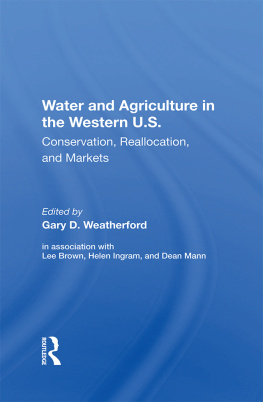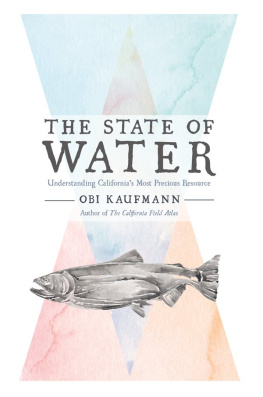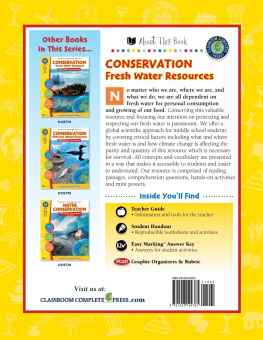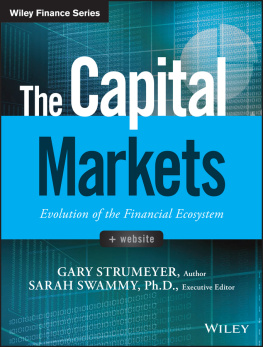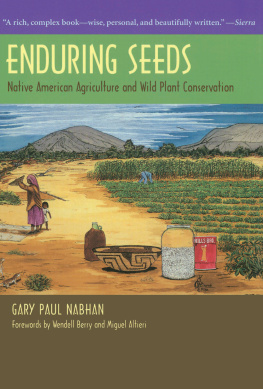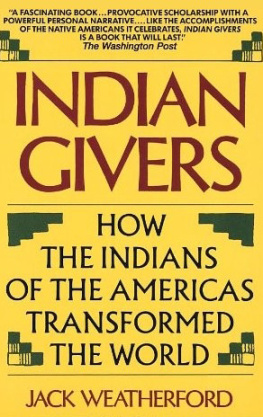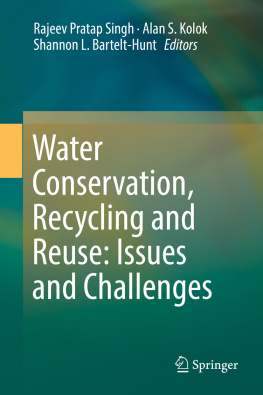Water and Agriculture in the Western U.S.
Other Titles in This Series
Economic Benefits of Improved Water Quality: Public Perceptions of Option and Preservation Values , Douglas Greenley, Richard Walsh, and Robert Young
Water and Western Energy: Impacts, Issues, and Choices , Steven C. Ballard, Michael D. Devine, and Associates
Also of Interest
Western Water Resources: Coming Problems and the Policy Alternatives , A Symposium Sponsored by the Federal Reserve Bank of Kansas City
Scientific, Technological and Institutional Aspects of Water Resource Policy , edited by Yacov Y. Haimes
Water and Energy in Colorado's Future: The Impacts of Energy Development on Water Use in 1985 and 2000 , Colorado Energy Research Institute
Water Needs for the Future: Political, Economic, Legal, and Technological Issues in a National and International Framework , edited by Ved P. Nanda
Public Representation in Environmental Policymaking: The Case of Water Quality Management , Sheldon Kamieniecki
* Energy Futures, Human Values, and Lifestyles: A New Look at the Energy Crisis , Richard C. Carlson, Willis W. Harman, Peter Schwartz, and Associates
* Renewable Natural Resources: A Management Handbook for the 1980s , edited by Dennis L. Little, Robert E. Dils, and John Gray
Energy, Economics, and the Environment: Conflicting Views of an Essential Relationship , edited by Herman E. Daly and Alvaro F. Umaa
* The Economics of Environmental and Natural Resources Policy , edited by J. A. Butlin
*Available in hardcover and paperback.
Studies in Water Policy and Management Charles W. Howe, General Editor
Water and Agriculture in the Western U.S.: Conservation, Reallocation, and Markets
edited by Gary D. Weatherford in association with Lee Brown, Helen Ingram, and Dean Mann
One of the major questions facing the western U.S. is whether irrigation water can be conserved and reallocated to help meet increasing nonagricultural water demands. This book, based on interdisciplinary research in several states, identifies and analyzes the legal, political, economic, and social issues involved in a "conserve-andtransfer" strategy. After providing an overview and policy framework for considering the role of conservation in water management, the authors use case studies to illustrate, for example, why water conservation is not a neutral policy or principle (demonstrating how other legitimate values can be adversely affected by a single-purpose pursuit of conservation); the various options available for conservation; how reallocation occurs in market transactions; and the legal restrictions on the sale of conserved surplus water.
Although formal market mechanisms are found to be rudimentary or lacking in most areas of the West, the authors contend that more proficient markets will evolve to measure the economic value of agricultural water. They conclude that a "conserve-and-transfer" strategy is selectively workable through the use of incentives, but that a number of tradeoffs, social concerns, and institutional constraints, which have not been adequately recognized to date, will have to be dealt with by policymakers if the strategy is to have wider application.
Gary Weatherford is director of the Water Program at the Center for Natural Resource Studies of the John Muir Institute. Lee Brown is associate professor of economics at the University of New Mexico, Albuquerque; Helen Ingram is professor of government at the University of Arizona; and Dean Mann is professor of political science at the University of California, Santa Barbara.
A Project of the John Muir Institute
Funded by The National Science Foundation
First published 1982 by Westview Press
Published 2019 by Routledge
52 Vanderbilt Avenue, New York, NY 10017
2 Park Square, Milton Park, Abingdon, Oxon OX14 4RN
Routledge is an imprint of the Taylor & Francis Group, an informa business
Copyright 1982 Taylor & Francis
All rights reserved. No part of this book may be reprinted or reproduced or utilised in any form or by any electronic, mechanical, or other means, now known or hereafter invented, including photocopying and recording, or in any information storage or retrieval system, without permission in writing from the publishers.
Notice:
Product or corporate names may be trademarks or registered trademarks, and are used only for identification and explanation without intent to infringe.
Library of Congress Catalog Card Number: 82-50068
ISBN 13: 978-0-865-31367-5 (hbk)
Dedicated, in memoriam, to our associate PHIL RENO who never tired of asking of research: "Will this inquiry improve people's lives?"
Contents
, Charles W. Howe
By Gary Weatherford
PART TWO: INSTITUTIONAL FRAMEWORK FOR AGRICULTURAL WATER CONSERVATION AND REALLOCATION IN THE WEST: A POLICY ANALYSIS
By Dean Mann
I. INTRODUCTION AND CONTEXT
The Carter Conservation Initiative
Conservation and Its Meanings
The Concept of Conservation
The Western Setting for Water Management
II. VARIETY, DIVERSITY, AND COMPLEXITY
Water Law Doctrines
Institutional Structure
Physical Circumstances
Character of Clientele
Political and Financial Arrangements
Interest Groups at the State and Local Levels
Water Conservation, Efficiency, and Their Application to Irrigation Agriculture
III. OPPORTUNITIES FOR WATER CONSERVATION
Background
On-Farm Circumstances and Opportunities for Water Conservation
Off-Farm Circumstances and Opportunities for Water Conservation
IV. INSTITUTIONAL ARRANGEMENTS BY THE STATE, REGIONAL, AND NATIONAL LEVELS
Public Attitudes
Distributive and Regulatory Politics
Water Conservation as Distributive Poiitics
Planning
Improved Research and Information Flows
Exogenous Variables
V. CONCLUSIONS
NOTES
PART THREE: FACTORS UNDERLYING IRRIGATION EFFICIENCY IN THE TULARE BASIN OF CALIFORNIA
By Gary Weatherford, Dean Mann, Steve Riley, Dean Birch and Albert Marsh
I. INTRODUCTION
II. WATER USE EFFICIENCY IN CONCEPT AND IN CONTEXT
Opportunities for Conservation in the Irrigation Water Cycle
Brief Description of Irrigation Systems
III. POLICIES AND PROGRAMS OF STATE AND FEDERAL AGENCIES
State Constitution and Legislation
Department of Water Resources (DWR)
State Water Resources Control Board (SWRCB)
Bureau of Reclamation
IV. PERCEPTIONS AND PRACTICES OF FARMERS, WATER DISTRICTS AND TECHNICAL ADVISORS
Introduction
Interviews with Farmers
Conclusions
Interviews with Water District Officials
Interviews with Technical Advisors
Conclusion: East Side/West Side Contrasts
V. CONCLUSIONS AND RECOMMENDATIONS
Need to Define Terms
Need to Base Judgments on Physical Reality
Need to Obtain More Information
Need to Target Opportunities for Water Savings
Need to Build on Proven Incentives

